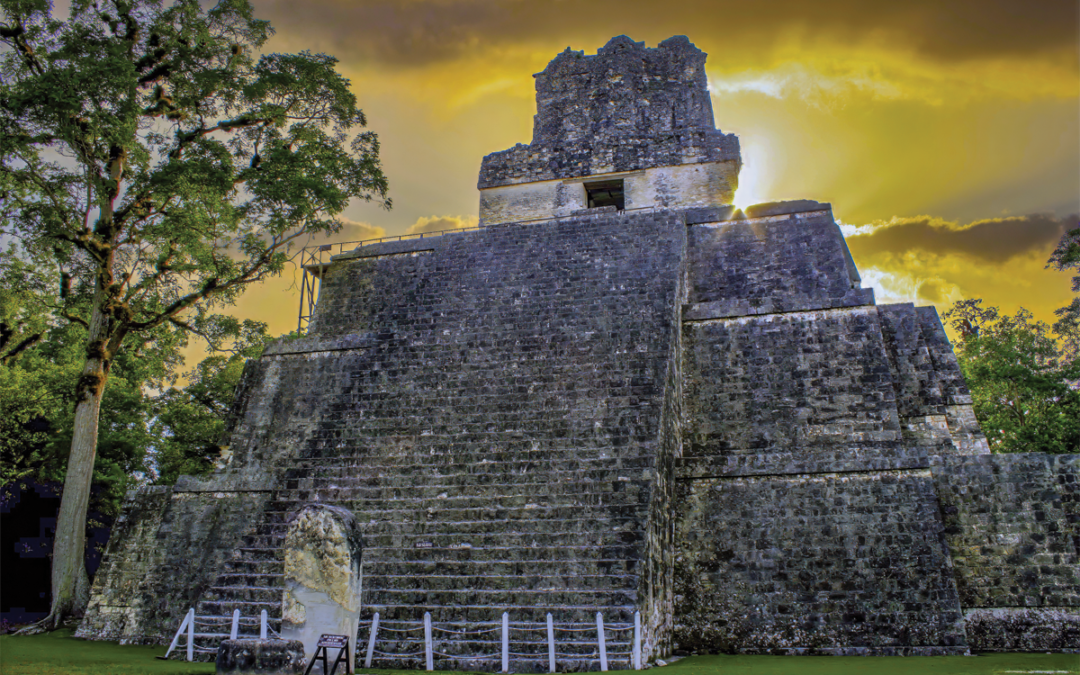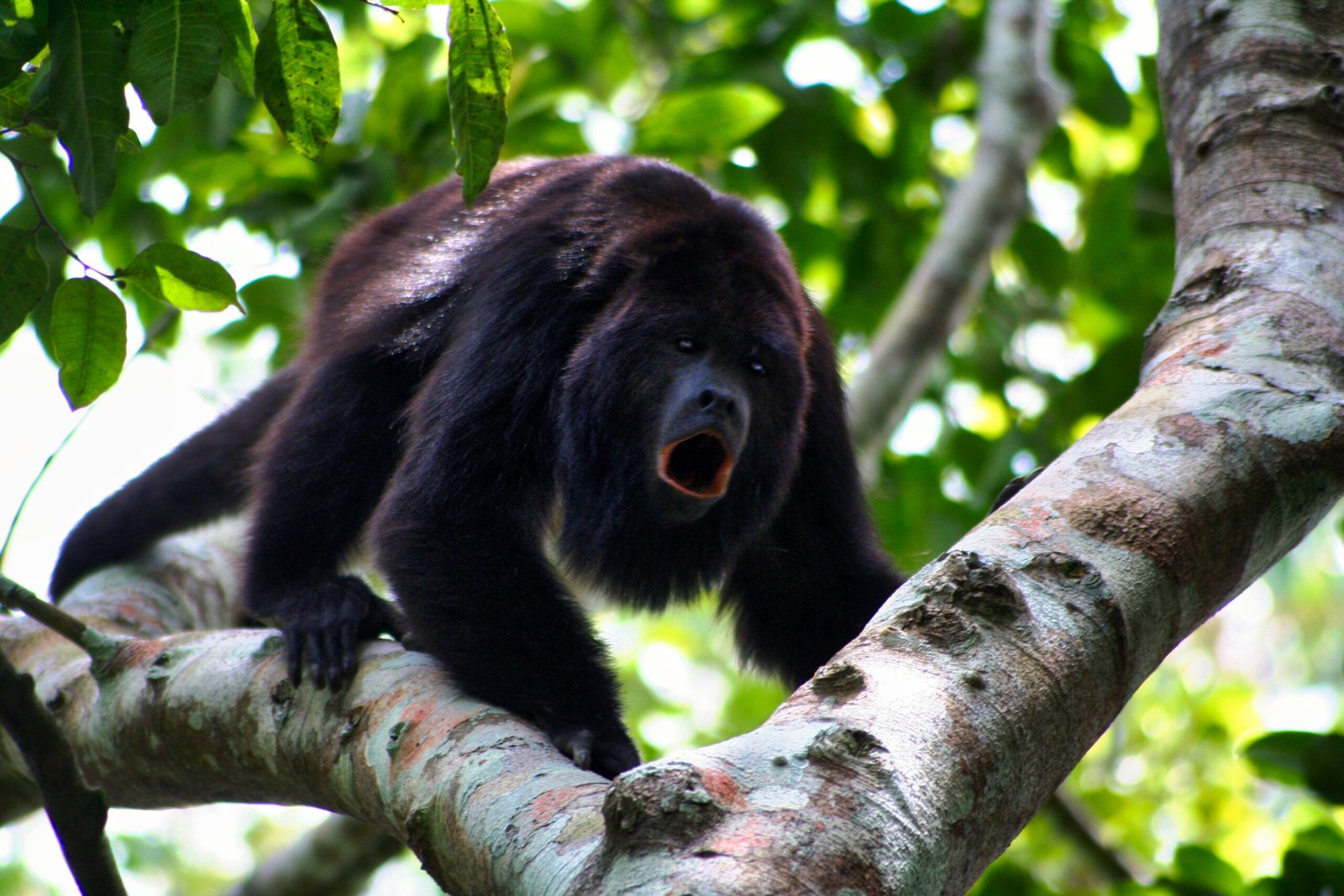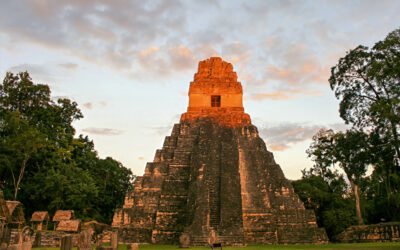Teotihuacan-Style Altar Tikal Discovery Reveals Maya-Central Mexico Cultural Ties
A remarkable archaeological find in Tikal National Park, Guatemala, is reshaping our understanding of Maya-Teotihuacan relations. Researchers have unearthed a Teotihuacan-style altar in Tikal, embedded within a Maya elite residential complex, shedding light on the deep cross-cultural interactions between two of Mesoamerica’s most influential civilizations during the late 4th to early 5th century A.D.
 Structure 6D-XV-Sub-3, altar with murals photographed from the south-west. Photograph by E. Román. Image credit: E. Román Ramírez et al., Antiquity (2025).
Structure 6D-XV-Sub-3, altar with murals photographed from the south-west. Photograph by E. Román. Image credit: E. Román Ramírez et al., Antiquity (2025).
Teotihuacan-Style Altar in Tikal: A Symbol of Cross-Cultural Influence
This newly discovered ritual altar stands about one meter high and two meters long, striking in its color scheme of red, yellow, and black. Decorated with traditional Teotihuacan motifs—almond-shaped eyes, double earspools, a nose bar, and a feathered headdress—its iconography suggests a spiritual connection with Teotihuacan’s Storm Deity.
What distinguishes this artifact from typical Maya structures is its stylistic execution. Experts believe the altar was either created by Teotihuacan-trained artisans or crafted locally by Maya sculptors heavily influenced by Central Mexican design traditions. Either way, the find provides strong material evidence of diplomatic and religious exchange between the ancient cities.
Elite Rituals and Ceremonial Significance
Far more than a decorative structure, the Teotihuacan-style altar Tikal discovery points to a deep ritualistic purpose. Excavations uncovered the remains of three children near the altar—evidence suggesting sacrificial ceremonies akin to those practiced in Teotihuacan’s ceremonial precincts. This aligns with the theory of shared religious ideologies and indicates that the altar played a role in elite Maya ceremonial life.
 Structure 6D-XV-Sub-3, altar with murals rendered from the north-west. Drawing by H. Hurst. Image credit: E. Román Ramírez et al., Antiquity (2025).
Structure 6D-XV-Sub-3, altar with murals rendered from the north-west. Drawing by H. Hurst. Image credit: E. Román Ramírez et al., Antiquity (2025).
Tikal: A Maya Powerhouse in Global Context
Tikal, a thriving Maya metropolis and UNESCO World Heritage Site, was a dominant force from 200 to 900 A.D. The presence of Central Mexican influence in Tikal through this altar amplifies the city’s stature as a cosmopolitan hub open to external ideas and intercultural cooperation.
At the same time, Teotihuacan, located over 600 miles away in modern-day Mexico, was flourishing as one of the largest ancient cities globally. Its influence extended across Mesoamerica, and this altar reinforces its cultural and political reach.
New Perspectives on Mesoamerican Diplomacy
This Teotihuacan-style altar in Tikal challenges older narratives of isolation between ancient Mesoamerican powers. Instead, it points to a complex web of diplomatic ties, artistic fusion, and shared cosmologies. The altar likely functioned as a diplomatic symbol—demonstrating mutual respect, religious solidarity, and perhaps political alliance between Teotihuacan and Tikal’s elite rulers.
Why the Tikal Teotihuacan Altar Matters
To archaeologists, historians, and Mesoamerican scholars, this find is a landmark. The Tikal altar is more than an artistic artifact; it is a tangible representation of ancient globalization and long-distance ideological exchange. It deepens our understanding of how ancient civilizations communicated, cooperated, and coexisted—often across vast distances.
As further excavations continue in Guatemala and Central Mexico, the Teotihuacan-style altar in Tikal will remain a cornerstone in unraveling the interconnected legacy of pre-Columbian Mesoamerica.











0 Comments